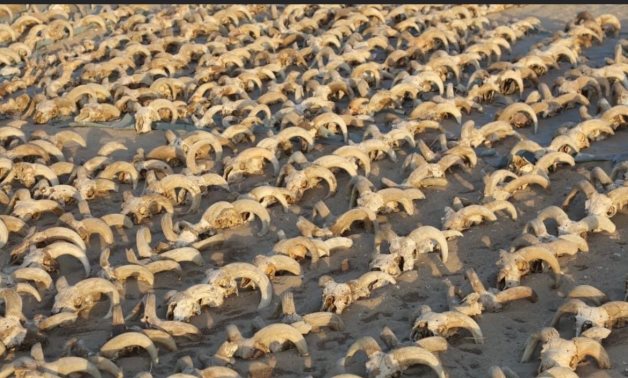
File: the American mission managed to uncover over 2,000 mummified heads of rams that date back to the Ptolemaic period
The American mission from New York University discovered a large number of mummified animals at the temple of Ramses II in Abydos.
This important discovery is a valid proof on the existence of cultic worship through the ages.
Mostafa Waziri, secretary-general of the Supreme Council of Antiquities said that the American mission managed to uncover over 2,000 mummified heads of rams that date back to the Ptolemaic period along with other mummified ewes, wild goats, dogs, gazelles, mongooses and cows.
Waziri added that some of the newly uncovered mummified remains which are still in their linen wrappings, were found in one of the newly discovered magazines within the temple’s northern boundaries.
The mission also has recovered remains of ancient trees, leather garments, a number of statues, papyri, and shoes.
Sameh Iskander, head of the mission announced that discovery of this large number of mummified rams inside the temple indicate that they were used as votive offerings, and is a valid proof of the existence of rams’ cultic practice in Abydos during the Ptolemaic era.
This important discovery reveals that the memory of Ramses II was still remembered in Abydos a thousand years after the end of his reign.
The American mission also discovered a massive opulent structure that has untraditional architectural layout.
This massive structure's walls which are about five metres thick, appears for the first time in Abydos.
The newly uncovered structure dates back to the end of the Sixth Dynasty of the Old Kingdom.
“This structure will provide important and detailed information on the activities of the Old Kingdom in Abydos, the matter that will contribute to reestablish the sense of the ancient landscape of Abydos before the construction of the Ramses II temple,” Iskander said.
Mohamed Abdel-Badei, head of the central department of Upper Egypt Antiquities, said that the mission managed to clear Ramses II temple's northern enclosure walls and its multiple structures to help us better understand the daily life in the confins, its administration and cultic activities.
This will lead to reassesing the image of Ramses II temple as perceived by previous research that were performed on since the temple’s discovery over 150 years ago.
Comments
Leave a Comment